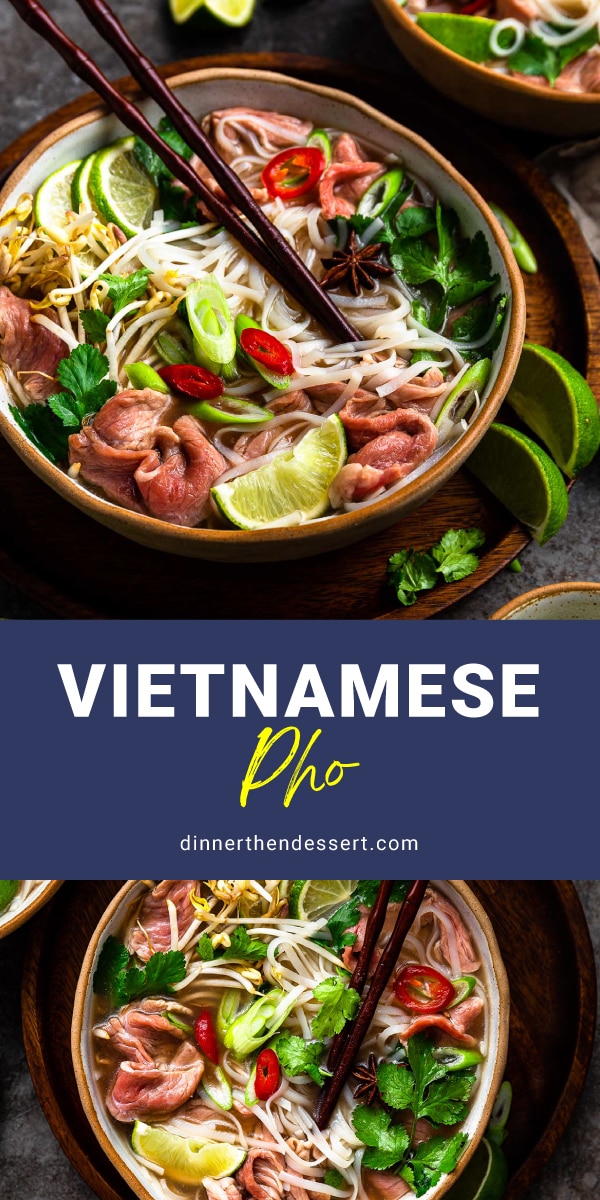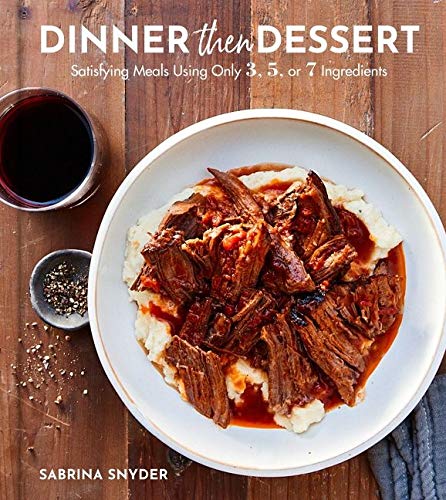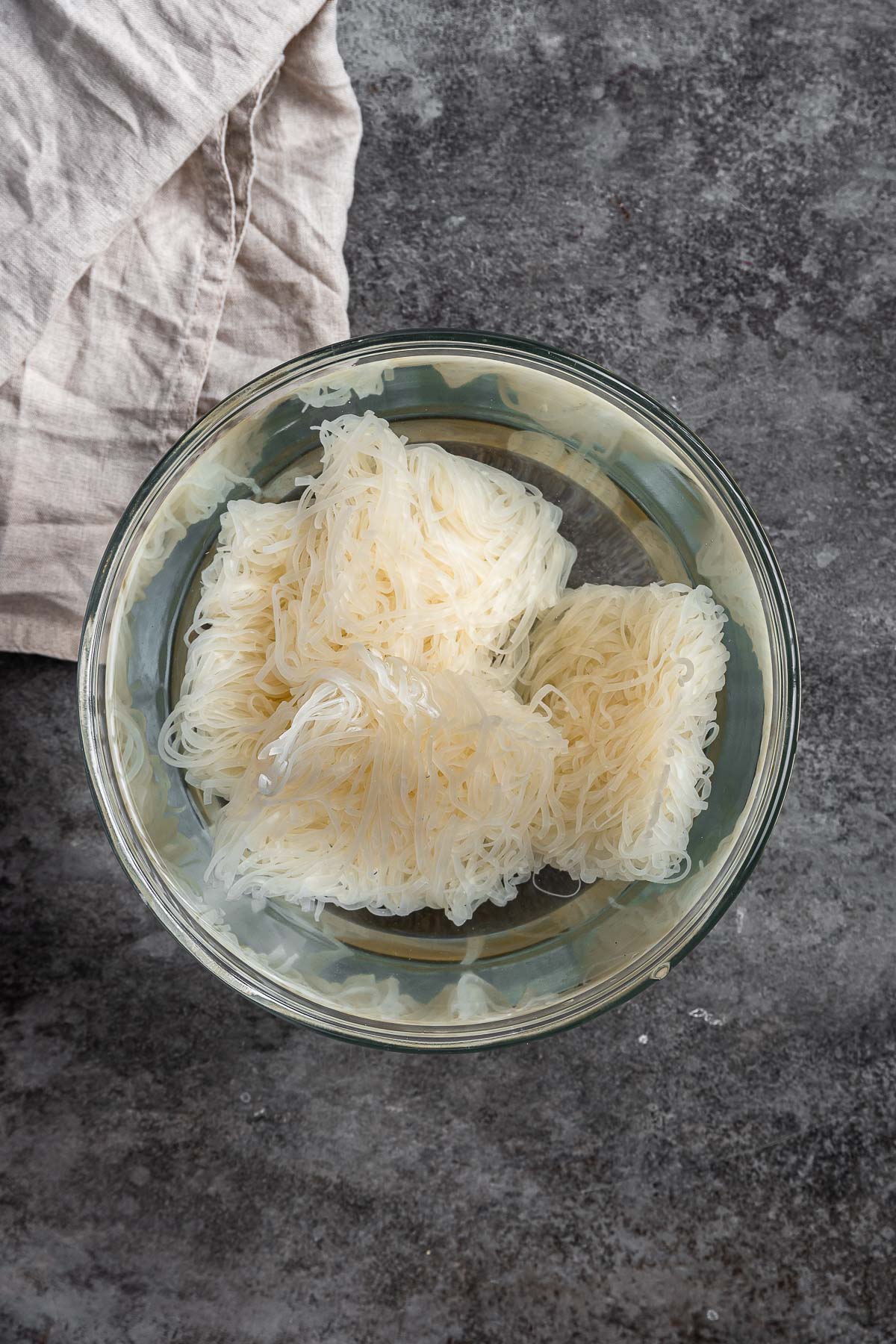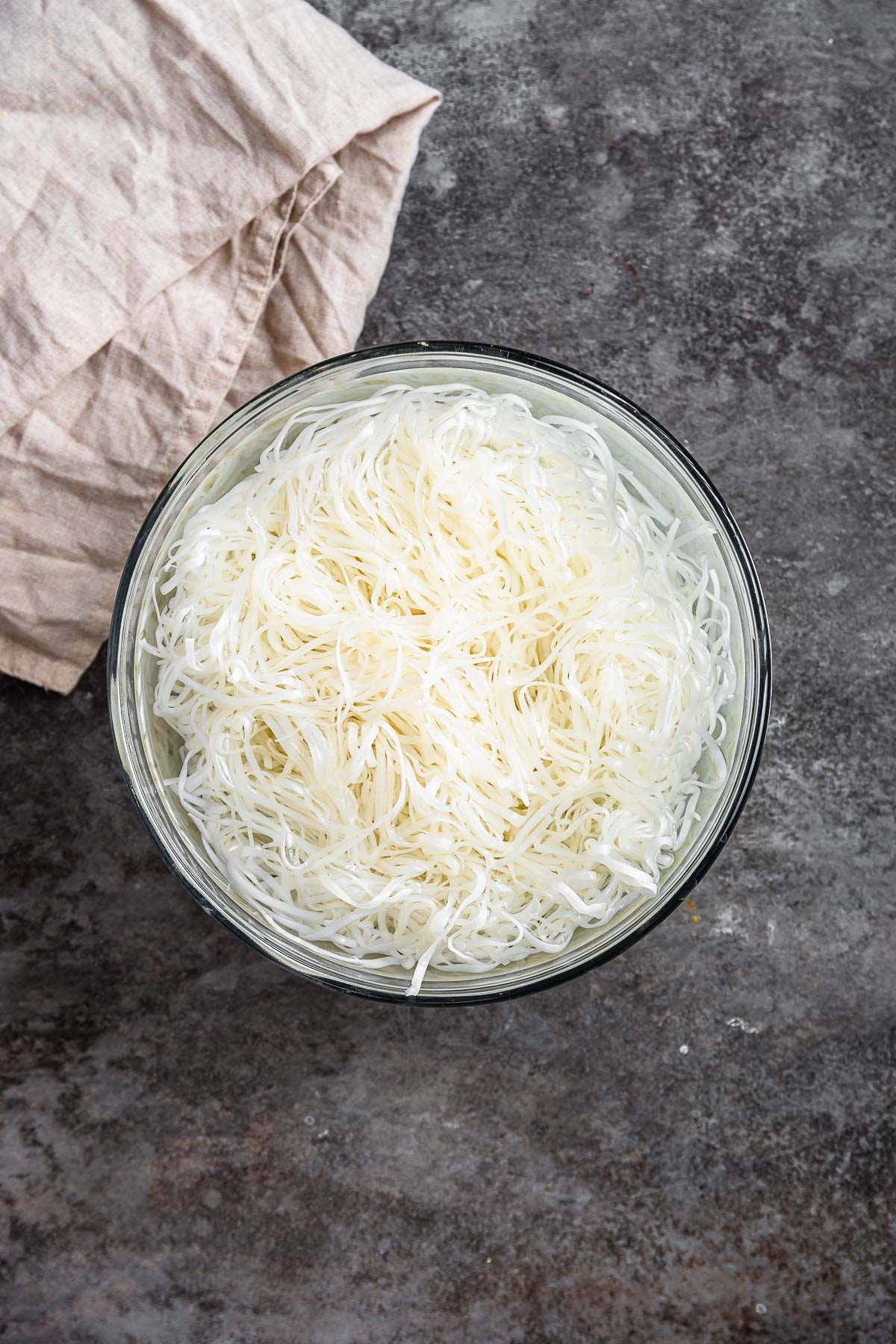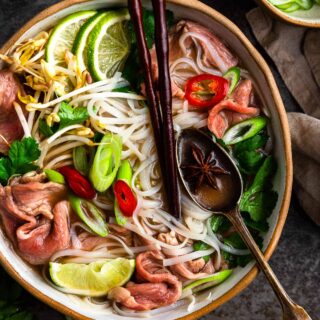Vietnamese Pho is the perfect soup with flavorful broth, rice noodles, delicious steak, bean sprouts, and simple but amazing seasonings!
Introduction
A delicious bowl of Beef Pho is available at your favorite Vietnamese restaurants. Just like many people enjoy making their favorite Chinese Takeout Dishes at home, attempting to prepare this dish in your own kitchen can be a rewarding experience.
While it’s a slow recipe, it’s also easy to follow. Preparing the authentic broth can be a relaxing activity, and the resulting delicious dish is well worth the time investment. Both stovetop and slow cooker options are provided, allowing you to choose the method that suits you best.
What Is Pho?
Pho, a renowned Vietnamese dish, has its roots in Northern Vietnam during the early 20th century. Although its exact origin story remains debated, it is widely accepted that Pho was shaped by the influences of French colonialism and Chinese culinary practices. Pronounced as fuh, Pho is a flavorful Vietnamese soup crafted by simmering beef or chicken bones with aromatic spices. It features savory broth, soft rice noodles, thinly sliced meat, and can be customized with fresh herbs, lime, chili peppers, hoisin sauce, and sriracha for added flavor.
Why Make Homemade Pho?
If you love Vietnamese soup, we highly recommend learning how to make the recipe yourself! Depending on where you live, driving to an authentic Vietnamese restaurant or getting takeout isn’t always an option. Plus, you don’t want to pay for a restaurant meal every time you’re craving a hearty bowl of Pho. While it does take quite a lot of prep, none of the steps to making this recipe are difficult. It just takes some patience, and for the most part, you don’t even need to be in the kitchen while preparing the hot broth.
Table of contents
Sabrina’s Vietnamese Pho Recipe
This soothing Vietnamese Noodle Soup is the perfect recipe to serve anyone feeling under the weather. The rice noodles are easy on the stomach, the beef is hearty and filling, and the fragrant broth makes the whole dish so tasty.
If you love our Homemade Soup Recipes like Asian Potsticker Soup and Italian Chicken Soup, then you need to try this comforting Vietnamese Pho next.
Can You Make Pho Ahead of Time?
Yes, this dish is intentionally prepared ahead of time, sometimes days in advance at some of the best Vietnamese restaurants! You can prepare the broth in advance and store it in the refrigerator overnight. However, it’s best to add the rice noodles, beef, and toppings just before serving to ensure freshness and optimal flavor.
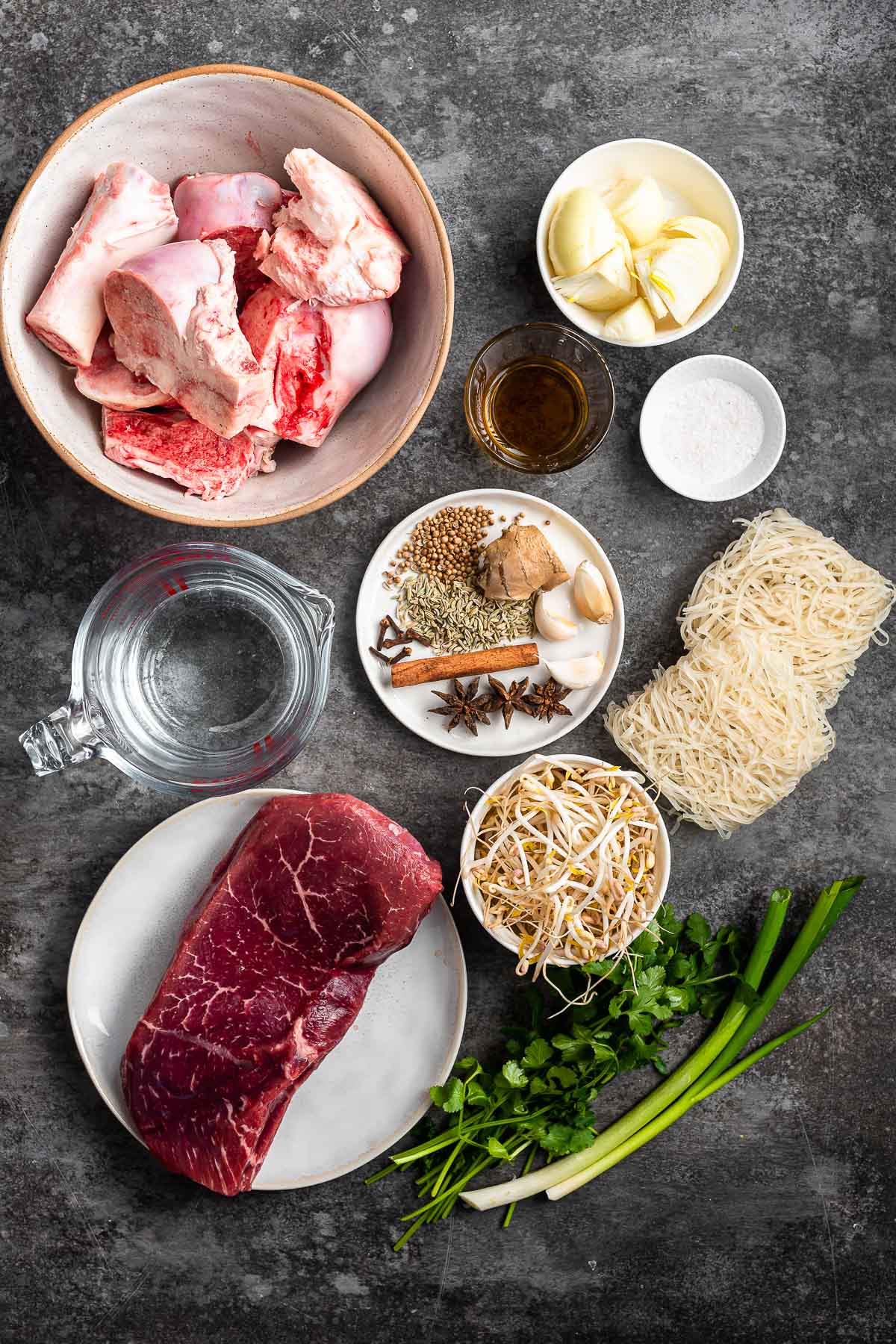
Ingredients
All these ingredients for your next bowl of Pho can easily be found in your local Asian market, including mung bean sprouts, rock sugar, star anise, and raw beef. Check it out!
- Beef bones: To flavor the homemade beef broth, you need 4 pounds of beef knucklebones. These are also known as stock bones, and they’re perfect for flavoring broth. Cook the bones with onions to prepare them, then use them with salt and fish sauce to flavor water into your own homemade pho broth. You can use marrow bones too if you have them!
- Spices: To flavor the broth further, you’ll tie together anise pods, a cinnamon stick, a piece of fresh ginger, cloves, fennel seeds, and coriander. Tie all the spices together in cheesecloth to make a bouquet garni. Add the bouquet garni to the broth. The flavoring will seep through the cheesecloth to slowly season the broth as it simmers.
- Noodles: Pho tastes best with flat rice noodles. Be sure to rinse with a bit of cold water after draining.
- Steak: for the beef, you can use sirloin or tenderloin steak. Just make sure to use thinly sliced steak.
- Garnishes: There are lots of garnish options that you can add to Vietnamese Pho. Depending on your taste, try adding chopped cilantro, green onion, bean sprouts, sriracha, hoisin sauce, and lime wedges. Traditionally, Thai basil, mint, and bean sprouts are served at most Vietnamese restaurants.
Kitchen Tools and Equipment
- Large Stock Pot: A spacious, heavy-bottomed pot is essential for simmering the Pho broth. Ensure it accommodates the quantity comfortably, and opt for one with a lid for better heat retention. We’re using a Dutch oven in our recipe but you can use a large pot.
- Baking Sheet: Use a baking sheet for roasting beef knuckle bones and onion wedges, imparting a rich flavor to the broth. Ensure it’s oven-safe.
- Cheesecloth: This fine, woven fabric is perfect for bundling aromatic spices and herbs into a bouquet garni, making it easy to remove them from the broth later.
- Strainer: A fine-mesh strainer or a cone-shaped chinois (pronounced sheen-wah) is necessary to filter out impurities when straining the broth, resulting in a clear, flavorful base.
- Large Bowl: Use a large bowl to soak the rice noodles, ensuring they soften properly before adding them to the hot broth. It’s essential for achieving the right texture.
How to Make
Time needed: 18 hours and 10 minutes.
- Step 1: Preheat the Oven
Preheat your oven to 400°F (204°C).

- Step 2: Roast the Bones and Onions
Place the beef knuckle bones and onion wedges on a baking sheet.
Roast them in the oven for 1 hour.
- Step 3: Transfer to the Dutch Oven
Transfer the roasted bones and onions to a large Dutch oven or pot.
Avoid adding the fat from the baking sheet.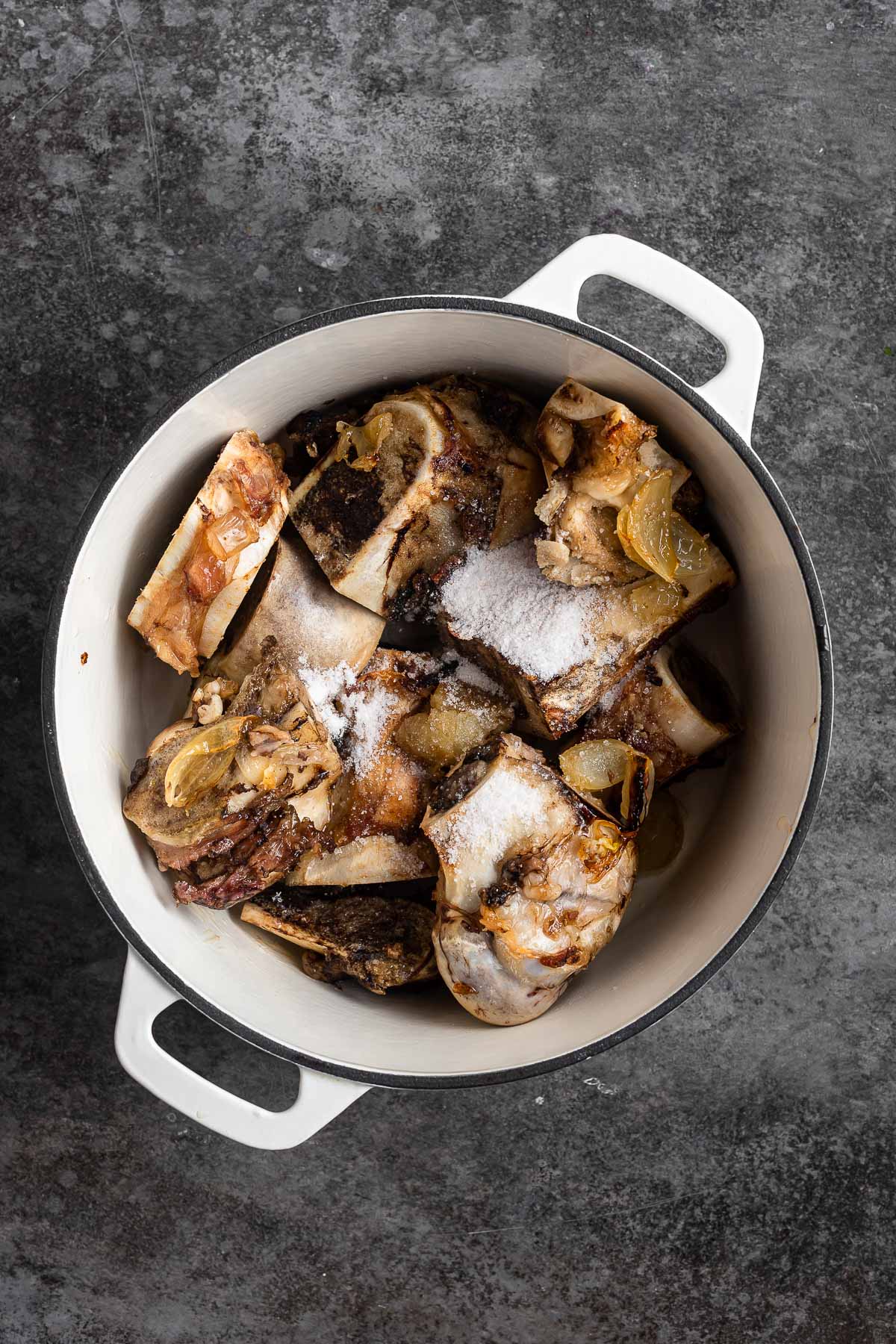
- Step 4: Add Seasonings and Water
Add kosher salt, fish sauce, and water to the pot.
Stir well to combine.
- Step 5: Simmer the Broth
Place the Dutch oven on the stove over medium heat.
Bring the mixture to a simmer.
- Step 6: Create a Bouquet Garni
While the broth simmers, assemble a bouquet garni using cheesecloth.
Bundle together star anise pods, a cinnamon stick, unpeeled garlic cloves (if available), whole cloves, fennel seeds, coriander seeds, and ginger.
Tie the cheesecloth closed with kitchen string and add it to the simmering liquid.
- Step 7: Cover and Simmer
Stir the contents well, then cover the Dutch oven.
Let it simmer for a minimum of 8 hours.
- Step 8: Strain the Broth
After simmering, remove the bouquet garni.
Strain the broth through a fine-mesh strainer or chinois to remove any impurities.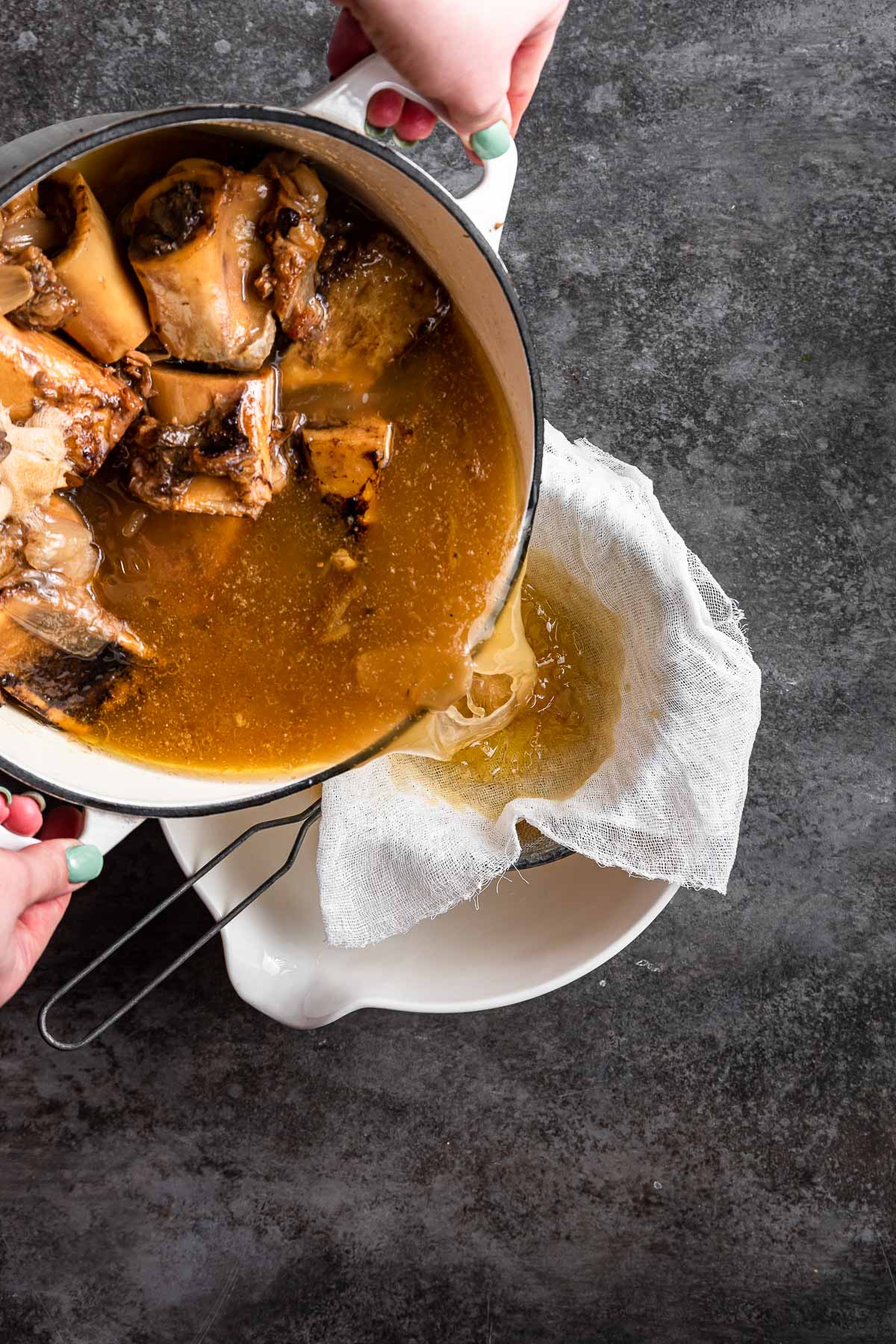
- Step 9: Refrigerate the Broth
Allow the strained broth to cool to room temperature.
Refrigerate it overnight for best results.
- Step 10: Prepare for Serving
Before serving, soak the rice noodles in a large bowl filled with 6 cups of room-temperature water for 1 hour.
Freeze the beef for 1 hour to facilitate thin slicing.
Remove excess fat from the refrigerated broth.
- Step 11: Simmer the Broth Again
Place the Dutch oven with the broth over medium heat.
Allow it to reach a low simmer.
- Step 12: Cook the Noodles
Add the soaked rice noodles (without the soaking water) to the simmering broth.
Let them cook for 1 minute.
- Step 13: Assemble Your Pho Bowls
Remove the noodles from the pot and place them into serving bowls.
Add thinly sliced beef to the simmering broth.
Immediately remove the beef slices and place them in the bowls. The heat from the broth will finish cooking the beef.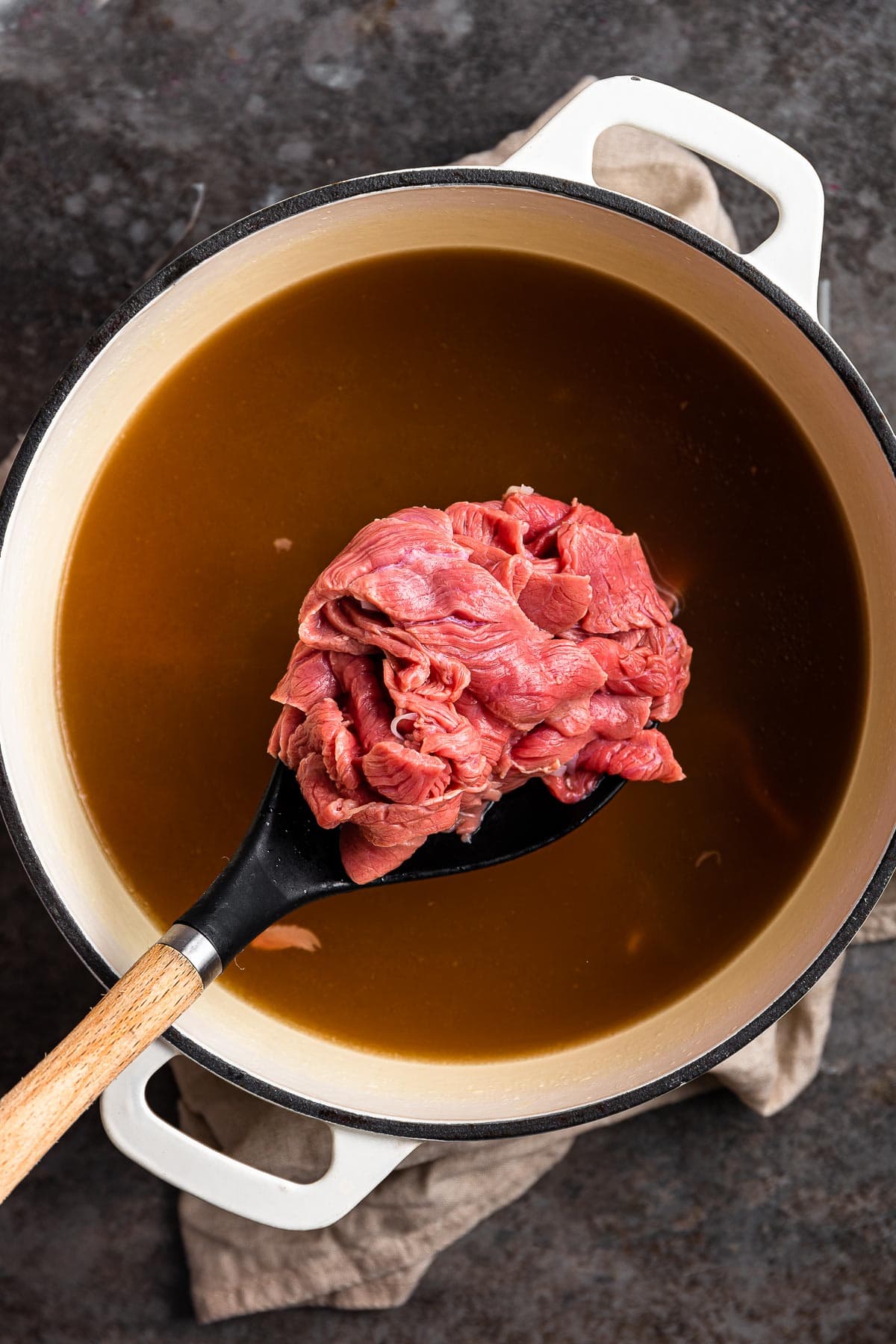
- Step 14: Customize Your Pho
Customize your bowls with fresh cilantro, thinly sliced green onions, bean sprouts, sriracha, and hoisin sauce to taste.

- Step 15: Serve
Top each bowl with the simmering broth, stirring to mix the ingredients.
Garnish with additional toppings if desired.
Serve with lime wedges for squeezing.
Enjoy your homemade Vietnamese Pho!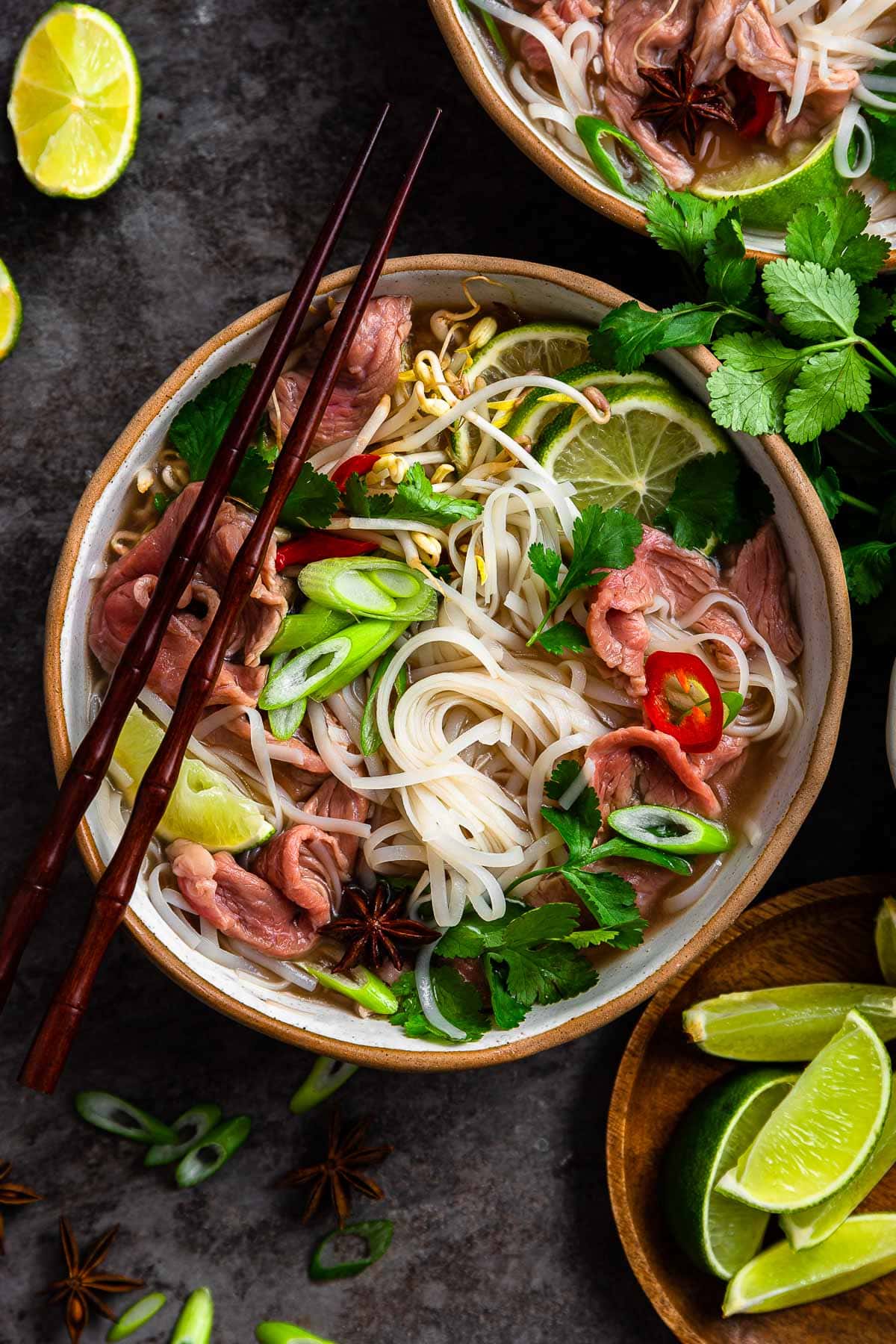
Nutritional Facts
How to Store
To keep your leftover Vietnamese Pho fresh, transfer it to an airtight container and refrigerate it within two hours of preparation. Store the broth separately from the noodles and meat to maintain their respective textures and flavors. The broth can last in the fridge for up to a week. But, the noodles and meat will only stay good for about 2 days.
Reheating Tips
When reheating, gently warm the broth on the stovetop, ensuring it doesn’t boil vigorously to preserve its rich flavor. Dip the noodles and beef into the simmering broth briefly to prevent overcooking, preserving the taste and texture of your Pho.
Freezing
The rice noodles won’t do well frozen. However, you can freeze the meat and the broth separately. To freeze leftover Pho, allow it to cool completely. Divide it into portion-sized airtight containers, leaving some space for expansion, and freeze for up to 2-3 months. Upon thawing and reheating, you may notice slight changes in texture, but the flavor will remain enjoyable. The broth will stay good frozen for up to 6 months. The steak will stay good frozen for up to 3 months.
Frequent Questions
Pho is pronounced like fuh. The ph in Vietnamese is typically pronounced as an f sound, and the o is pronounced with a rising tone. So, it’s often phonetically written as fuh to help English speakers pronounce it correctly.
Yes, you can substitute chicken for beef to make chicken pho (Pho Ga). Use chicken bones and meat instead of beef knuckle bones and sirloin. Adjust cooking times accordingly for the chicken.
While making the broth from scratch provides the authentic flavor, you can use pre-packaged beef broth as a time-saving alternative. Enhance it with spices like star anise and cinnamon for a closer flavor match.
If you don’t have a Dutch oven, you can use a large, heavy-bottomed pot with a lid. Ensure it can accommodate the broth and ingredients comfortably.
To prevent rice noodles from sticking together, add a half teaspoon of sesame oil to the soaking water before placing them in the bowl. Stir them occasionally during soaking.
Absolutely! You can make a vegetarian or vegan version by using vegetable broth instead of beef, and tofu or seitan in place of meat. Adjust the toppings to suit your preference, and enjoy a flavorful meat-free alternative.
Recipe Card


Ingredients
Broth:
- 4 pounds beef knuckle bones
- 1 yellow onion , cut into wedges
- 1 tablespoon kosher salt
- 2 tablespoons fish sauce
- 16 cups water
Bouquet Garni:
- 3 pods star anise
- 1 stick cinnamon
- 3 cloves garlic , unpeeled if you have it
- 6 whole cloves
- 2 teaspoons fennel seeds
- 1 teaspoon whole coriander seeds
- 1 inch ginger , unpeeled and cut into chunks
- 1 cheesecloth , with kitchen string to tie
Add Ins:
- 8 ounces rice noodles
- 6 cups water , room temperature
- 2 pounds sirloin steak , or tenderloin if you can
To Finish:
- 1 cup cilantro , chopped
- 1/4 cup green onion , thinly sliced
- 12 ounces bean sprouts
- Sriracha , to taste
- Hoisin Sauce , to taste
- lime wedges
Instructions
Broth:
- Preheat oven to 400 degrees.
- Add the soup bones and onion wedges to a baking sheet.
- Bake for 1 hour.
- Add the bones and onion to a large pot (see below for slow cooker version).
- Note: Do not add the fat that is on the baking sheet, the soup does not need additional oil.
- Add salt, fish sauce and water, stir well.
- On medium heat bring to a simmer.
- Lower the heat to medium-low.
- To a cheesecloth add the anise pods, cinnamon, garlic cloves, whole cloves, fennel seeds, coriander seeds and ginger.
- Tie the cheesecloth closed with some kitchen string.
- Add to the simmering liquid.
- Stir well, then cover and simmer for a minimum of 8 hours.
- Strain the broth through a chinois or a cheesecloth lined strainer.
- Let broth cool then place in refrigerator overnight.
Day of Serving:
- Add rice noodles to a large bowl with the 6 cups of water and let sit for 1 hour.
- Note: This water is only to soak the noodles, it does not go in the pot with the broth.
- Freeze the beef for 1 hour, then slice it as thinly as possible, giving it a shaved beef thickness and appearance.
- Scoop off much of the congealed fat (you can reserve this for cooking in the future as you would with bacon fat).
- Note: If you leave too much fat in the soup, it will coat your spoon and mouth with oiliness when you eat it.
- Bring the broth to a low simmer in a pot on medium heat.
- Add the soaked rice noodles (not the water they soaked in), to the broth and let cook for 1 minute.
- Remove the noodles from the pot and place into 4 bowls.
- Add the beef to the broth, then immediately remove and place in the bowls.
- Note: The beef should be barely cooked, maybe not even all the way cooked in some spots, but the heat of the broth in the bowls will finish the cooking.
- To your bowl of noodles and beef and add additional toppings as desired including cilantro, green onions, bean sprouts, sriracha and hoisin sauce.
- Top with simmering broth, stir to mix and garnish with additional toppings if desired along with lime wedges for squeezing.
Slow Cooker:
- To make this broth in the slow cooker, roast the bones and onions as directed above.
- Add the bones and onions to the slow cooker.
- Add salt, fish sauce and water.
- To a cheesecloth add the anise pods, cinnamon, garlic cloves, whole cloves, fennel seeds, coriander seeds and ginger.
- Tie the cheesecloth closed with some kitchen string.
- Stir well, then cover and cook on high heat for 1 hour.
- Lower the heat to low and cook for 12-24 hours (the longer the better).
- Strain the broth through a chinois or a cheesecloth lined strainer.
- Let broth cool then refrigerate.
- Continue the recipe from “Day of Serving”.
Notes
- Click on the “yield” amount to slide and change the number of servings and the recipe will automatically update!
- To convert measurements to grams, click on the “Metric” option next to “Ingredients” in the recipe card.
Nutrition
Variations on Vietnamese Pho
- Chicken Pho: If you’d rather make chicken pho instead of beef pho, you’ll need to cook down chicken bones instead of beef bones to prepare the broth. Then replace the steak with chicken thighs. Note: chicken needs to cook to 165 degrees to be safe to eat. You can braise the chicken in a separate pan so it’s mostly cooked before adding the meat to the pho broth.
- Shrimp Pho: Another one of the variations in meat that you can try is making Shrimp Pho. Start by removing the shells from raw shrimp. You’ll need to cook the onions, then add the shrimp shells and onions to the broth along with the spice pouch to flavor the broth. Then strain the broth to remove the spices and shrimp shells. When you’re assembling the Pho on the day of, add the raw shrimp to the simmering broth. It’ll take a few minutes for shrimp to cook completely. Then you can add the shrimp to the bowls with the rice noodles and other add-ins.
- Additional Garnishes: To personalize your Pho recipe try adding more garnishes like Thai chili peppers, fresh jalapeno peppers, basil, or mint.
More Comforting Soups
